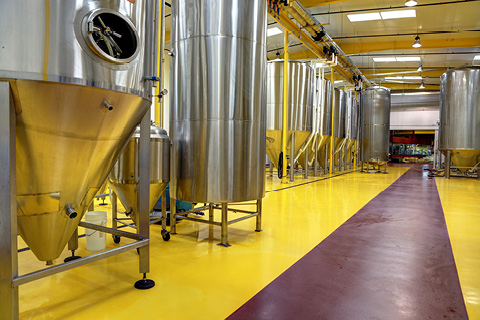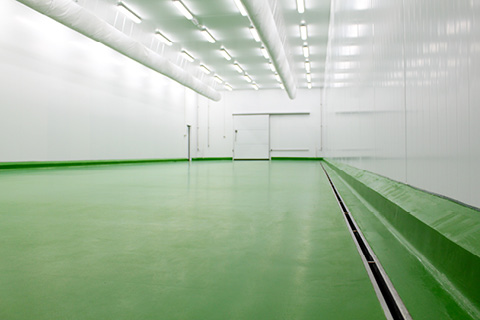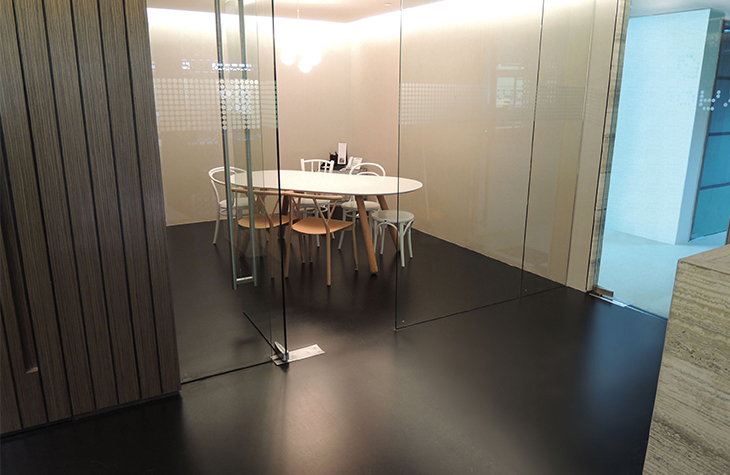5 Ways to Reduce the Risk of Food Poisoning Outbreaks

Nearly all of us will remember hearing of cases of mass food poisoning being reported by the media. Recently, an E. coli 0157:H7 outbreak has been reported in the United States with infections linking back to the consumption of Romaine Lettuce from Yuma growing region. This outbreak has so far infected nearly 200 people across 35 states in America, hospitalised 89 people and resulted in five deaths.
Over 700 serotypes of E. coli bacteria have been identified to date. The most notorious being the one mentioned above, which causes approximately 100,000 illnesses, 3,000 hospitalisations and 90 deaths per year in the United States.
Being able to trace these outbreaks back to the source can help to save lives, as often the foodstuffs are recalled to stop any further cases of infection. However, being found as the source can be absolutely disastrous for the facility, and can cost a company thousands to rectify the outbreak, result in job losses, facility closures, litigation and even imprisonment.
Therefore, it is beneficial to everyone to ensure that facilities avoid any risk of food poisoning outbreaks. We’ve put together the following list of five flooring related ways a food and beverage business can minimise the threat posed by contaminants and bacteria.
1. Put a HACCP Plan in Place
The Hazard Analysis and Critical Control Point (HACCP) food safety management system is a preventive risk assessment tool operated by the food industry to ensure that all food safety hazards are assessed. This risk assessment provides the means to reduce process hazards arising from issues such as foreign body problems from machinery, contamination from food handlers or poor temperature control.
Recently, the majority of sectors within the food and beverage industry have recognised that being HACCP compliant will mean that their facilities will meet the demands of regulatory authorities, and also provide reassurance to the end-user that products have been safely procured, produced and packaged.
2. Add an Antibacterial Coating
In food and beverage facilities, spillages are expected and cleaning these up quickly and thoroughly is a must to avoid slip hazards and bacteria growth. Flooring with minimal joints is much easier to sterilise, as there are less spaces for bacteria to hide and multiply.
Some flooring materials go one step further however, by featuring antibacterial properties that work to kill bacteria in between wash cycles. Flowfresh represents a new generation of performance antibacterial flooring that is based on the use of natural silver. Made in partnership with Polygiene®, Flowfresh is able to kill up to 99.9% of bacteria in contact with the floor. Locked into the resin matrix of the flooring material, the Polygiene® additive, which consists of a thermosetting amino compound, emits powerful silver ions over an extended period of time which target germs on the floor’s surface. Common bacterium that have no defence to Polygiene® include E.coli, Salmonella typhi, MRSA, Listeria welshimeri and Staphylococcus aureus.
3. Dirt-free Drainage
One of the most critical areas to pay attention to in the design of a food and beverage facility is the drainage system. Using the wrong materials or style of drain can lead to more bacterial growth, which could incur severe contamination issues.
Trench drains with grates are traditionally very popular in food and beverage facilities, however they can easily break over time due to constant exposure to cleaning solutions, heavy machinery, natural acids from foods and countless other factors. Slot drains on the other hand have no grates, making cleaning much more manageable. The seamless nature means that there are no hidden cracks or spaces for bacteria to hide and grow in.

4. Regular Cleaning Regime
A thorough and regular cleaning regime must be adhered to in all food and drink processing plants, even if antibacterial flooring is present. Training members of staff to adhere to this regime will help to keep a plant hygienic throughout working hours, and help to further reduce the risk of contamination and food poisoning outbreaks. The use of cleaning products will work simultaneously with antibacterial properties to maintain high hygiene standards; neither should be used alone but in correspondence with each other.
Hosing down plants can result in standing water, which can be extremely dangerous. Having a pitch in the flooring, angling downwards towards the drainage systems means that gravity can give a helping hand with allowing cleaning water to exit the facility floor, carrying any dirt or bacteria with it.

5. Contamination-free Zones
Finally, zoning a facility can help to further reduce the risk of contamination and the potential for outbreaks. For example, keeping raw and cooked foodstuff separate, or washed and unwashed produce in separate areas of the facility. The flooring can be used to outline these separate areas through the use of different coloured resins for different zones, or using demarcation to outline specific spaces.










